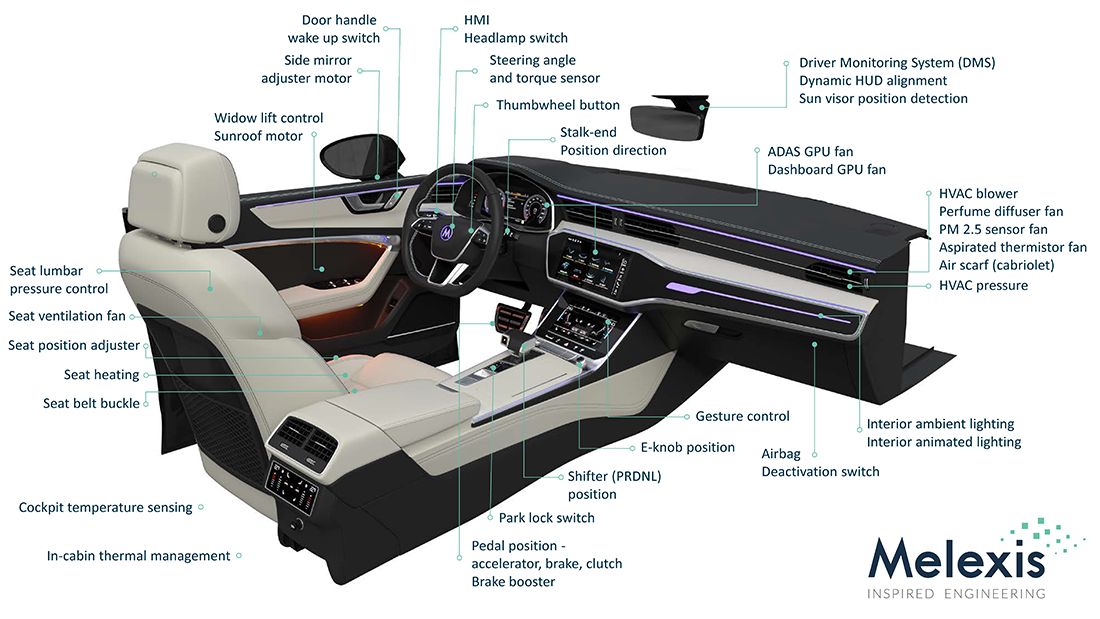The cockpit of the future
A glimpse inside the Intelligent Cockpit
How innovative sensor and driver technologies from Melexis are shaping the cockpit of the future
The original Blade Runner movie portrayed flying cars. It was a little optimistic, as it was set in the “future” of 2019. Its sequel extended the timeline a little, suggesting that by 2049 we’d be parking our 3-wheeled, AI-guided flying vehicles on rooftops. It would be tempting to think that it’s only Sci-Fi and far from reality. But while flying cars might indeed be a distant speck on the horizon, many other advances in automotive technology have been implemented in recent decades. Indeed, what were once moonshot ideas are now being shown in the short- and medium-term.
For example, every year more cars are coming onto the market with interiors that look more like living rooms. Driver and passenger monitoring systems are emulating an “emotional intelligence,” enabling the car to proactively respond to the user’s mood by adjusting for example the ambient lighting or music – or even the smell of the vehicle. Biometric technology allows everyone inside the car to be identified, to give each person access to his or her own content, settings, or cloud-based services. Digital assistants provide guidance. Cars are equipped with a wide range of sensors, in-cabin cameras and radars.
Further down the line, concept autonomous cars display interiors that have been turned into complete gaming consoles, in which seating vibrations, air conditioning, and fragrance infusion are all part of the game environment and stimulate perceptions. Other cockpits look more like a wellness spa, with seats that move, pivot and recline according to users’ perceived needs (“Seat As A Service!”). The cockpit of the car will thus be driven by what people want to do inside the car.
One of the companies at the forefront of the intelligent cockpit is the leading automotive IC supplier Melexis, which provides innovative micro-electronic semiconductor solutions to enable the cockpit of the future. In this article we look at some of the main intelligent cockpit applications, and where Melexis is contributing to their development.
The cockpit environment
Lighting
Interior lighting can bring comfort as well as vital safety features to cars, especially for autonomous driving. Without direct control of the car, the occupant's focus will obviously not be on the road. Smart lighting therefore has a key role to play in supporting the communication of the car to its occupant. The cockpit will, for example, quickly turn the interior lights to red to communicate danger, immediately catching the attention of the driver. Development of interior lighting is taking place in a number of directions. And it’s a fast-growing space. Blink and you might miss something. One premium manufacturer is predicting a tenfold increase in lighting elements in the car in the near future.
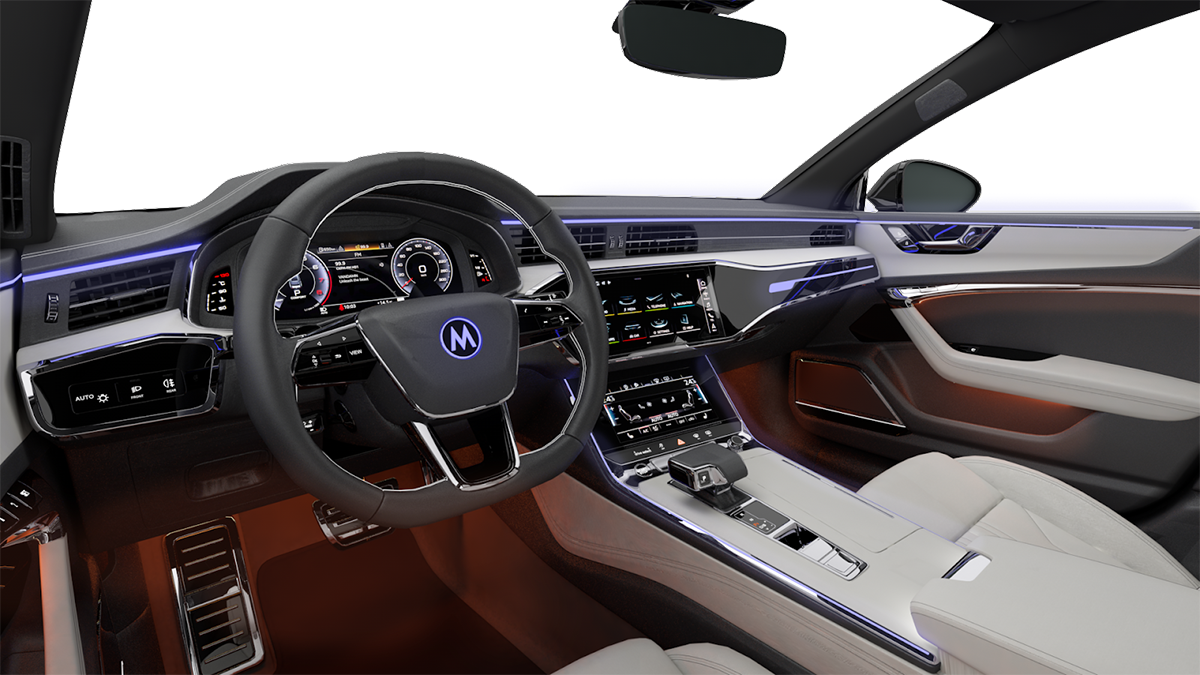
Static ambient lighting and slowly animated lighting applications are being standardized in every vehicle. Little used areas for lighting that are now “seeing the light” include the floor, smart décor trims, cupholders, climate control vents, and the surfaces of textiles. Melexis offers Local Interconnect Network (LIN) products capable of driving multiple LEDs and simplifying the overall design.
Taking the concept one step further is highly animated lighting. This can be integrated into driver assistance systems to visually provide information or reinforce warnings. An animated red light could warn of an impending collision. If a cyclist is approaching a stationary car, the vehicle could rapidly flash red interior lights on a door panel strip to warn its drivers and passengers before opening a door. For such applications, Melexis has developed the Melexis Light Bus MeLiBu®. This is a high-speed low Bill of Materials (BOM) robust automotive communication system. It enables applications with high RGB-LED counts for highly animated light animations within cars. The MeLiBu® technology is already being adopted by leading global manufacturers in order to enhance the safety features of their newest models.
Multi-color ambient lighting is becoming more popular. In parallel, the number of LEDs as well as the car constraints are increasing, which makes the automaker’s job of system integration much more difficult. Melexis is working closely with OEMs to provide a scalable solution that supports low-end up to high-end cars as well as addressing the development challenges such as light power and miniaturization.
Occupant and in-cabin monitoring
Active real-time driver monitoring systems (DMS) use sensors in the steering wheel or an inward-facing camera to track driver alertness and help ensure the driver stays engaged during vehicle operation. This safety feature alerts the driver to signs of drowsiness or distraction – crucial functionality for semi-autonomous vehicles. If the system detects signs of distraction, it repeatedly prompts the driver via visual and audible warnings, seat vibrations, or small auto-braking events. The driver can then restore full control of the vehicle and rest if needed.
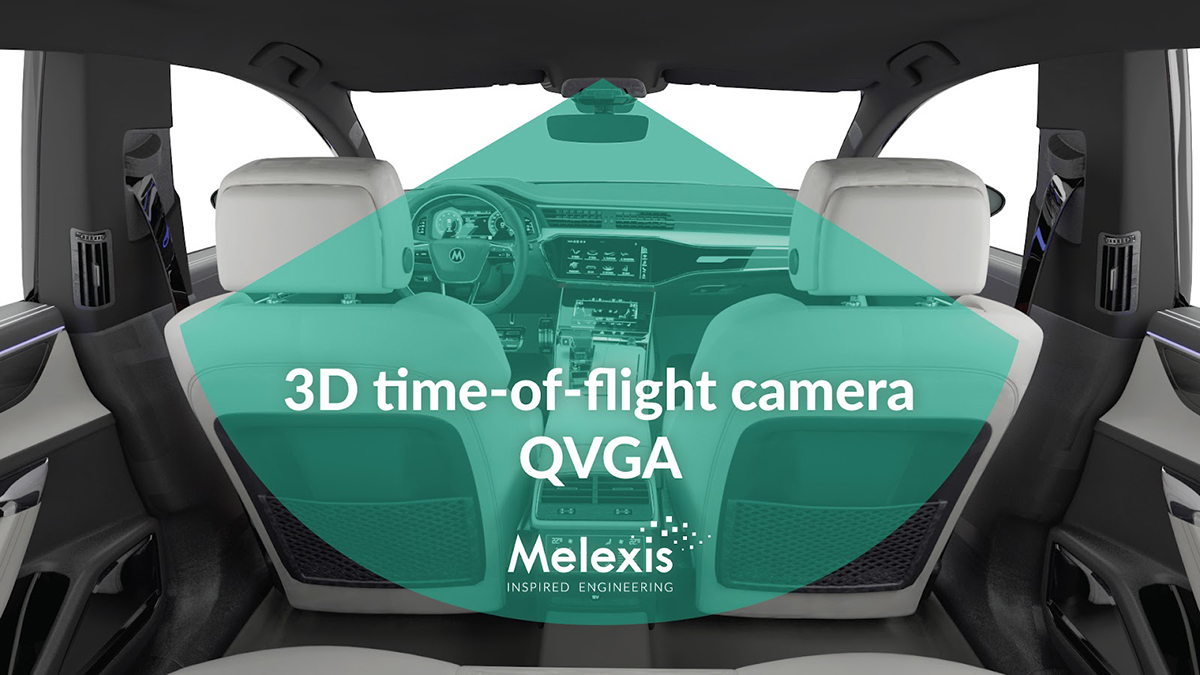
Some manufacturers use a child/passenger monitoring system that gives front-seat passengers and the driver a view of what’s going on in the back seats from the center display. Other applications for driver monitoring systems include driver identification and authentication; heart rate measurement; head position tracking; eye position tracking; and driver impairment level detection. These technology innovations contribute to the more robust safety solutions needed for the next generation of autonomous driving functions.
Time-of-flight (ToF) technology enables new functionalities like monitoring driver tiredness, eye gaze, and hands-on-wheel, as well as vehicle occupancy (seat belt detection, child left behind). The main advantages of ToF cameras are that they work day and night; they provide high distance accuracy, sunlight invariance and sunlight robustness; and they operate at fast speeds of up to 135 (distance) frames per second. Moreover, direct output of the 3D depth information requires less image processing for calculating the distance information, leading to smaller processors where normally big and powerful components are needed. With either infrared single point thermometer or infrared sensor array, Melexis enables solutions in the cockpit such as the HVAC system adapting automatically versus the temperature of the driver.
Melexis has developed its optical ToF technology for a range of cockpit applications. By 2019, Melexis had shipped more than one million ToF sensor ICs for interior sensing and is seeing a rapidly growing interest from OEMs and Tier 1s as ToF technology enables many interior sensing use cases.
Warm or cool cabin
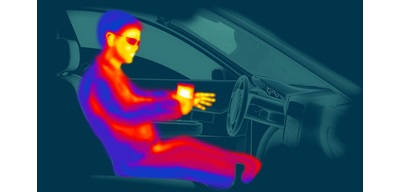 An important factor to our comfort is obviously the cockpit temperature. In an ideal case the car should monitor and adjust the temperature automatically, which is possible using Melexis contactless infrared sensors.
An important factor to our comfort is obviously the cockpit temperature. In an ideal case the car should monitor and adjust the temperature automatically, which is possible using Melexis contactless infrared sensors.
To ensure the optimum temperature, thermal management is key, especially in electric vehicles (see BEV thermal management) which no longer benefit from the engine heat. Pressure sensor ICs, Embedded motor drivers or Smart motor drivers are supporting efficient thermal management. Positive Temperature Coefficient (PTC) heaters are also added not only to maintain the battery at an optimum temperature, but also to provide heat for driver and passengers. Melexis provides technology enabled with the use of innovative integrated current sensors for this purpose.
The seating experience
Comfortable yet fully functional seating is an essential component of the cockpit of the future. Innovations are constantly coming to market, offering improved comfort, new materials and autonomous technologies. Indeed, manufacturers are now regarding the “car seat” as a somewhat old-fashioned term, replacing it with the “seating experience.” The aim is to offer something comparable to a first-class airline seat.
Seat control
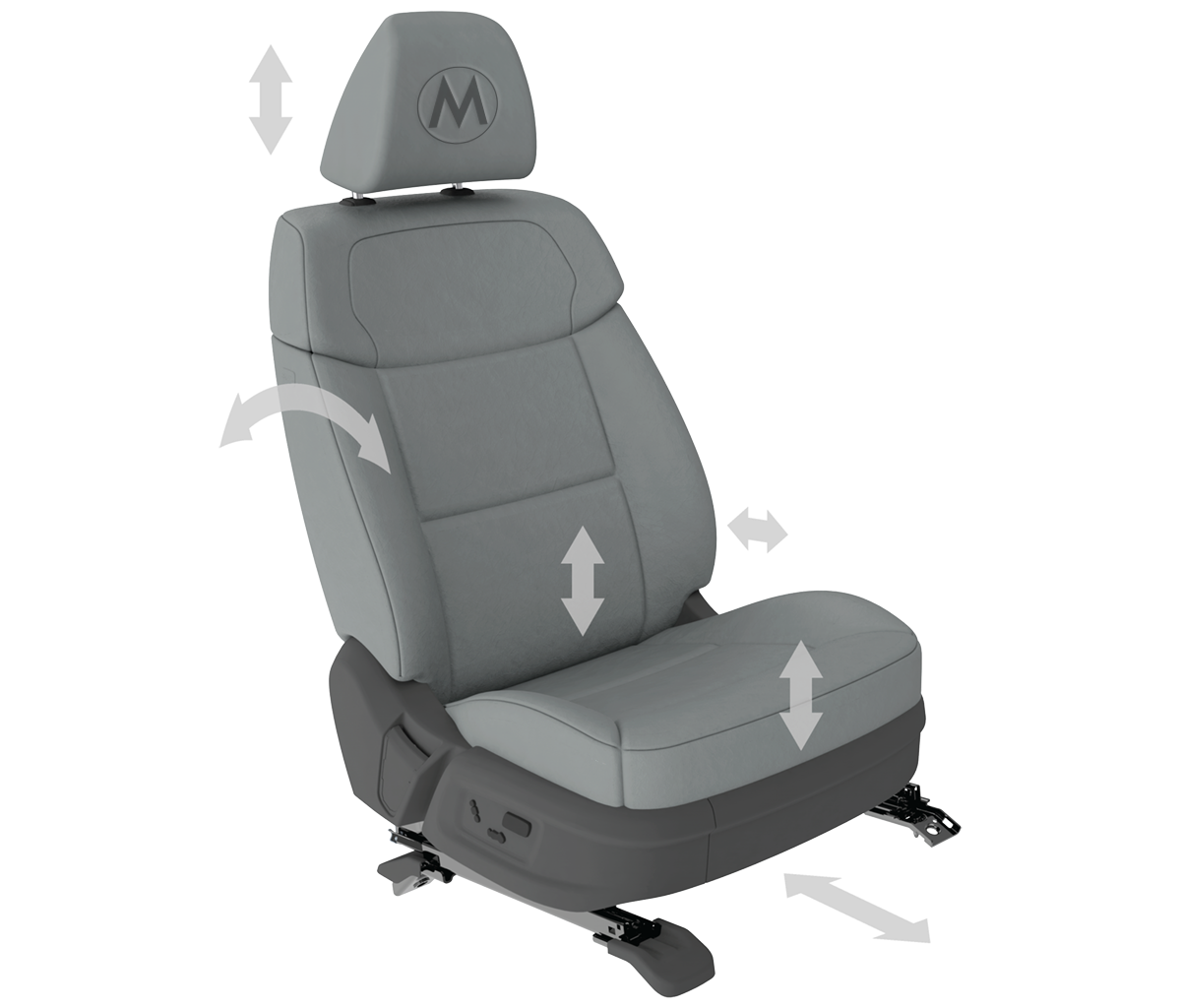 Having the seat positioned exactly as the driver and occupants want – even before they enter the car - is a way to ensure everyone is in the best possible position for safe driving. What’s more, they don’t have to remember – or even be reminded – to make any necessary adjustments themselves, for example of the rearview mirror. Melexis motor driver solutions enable multiple possibilities thanks to their inherent technology and also the sensor flexibility. Seat position adjustment with a latch & switch, also comes as a PCB-less version, making it a plug & play solution.
Having the seat positioned exactly as the driver and occupants want – even before they enter the car - is a way to ensure everyone is in the best possible position for safe driving. What’s more, they don’t have to remember – or even be reminded – to make any necessary adjustments themselves, for example of the rearview mirror. Melexis motor driver solutions enable multiple possibilities thanks to their inherent technology and also the sensor flexibility. Seat position adjustment with a latch & switch, also comes as a PCB-less version, making it a plug & play solution.
Seat belt
Seat belts, together with airbags, are crucial safety features. Melexis set the market reference solution for seat belt buckle detection with its 2-wire latch & switch, proving it is still possible to enhance such a sensor, here by offering Triaxis® lateral sensing features solving mechanical constraints.
Seat massage
The development of car seats that relieve the strain for drivers and passengers traveling long distances is fast becoming a key competitive advantage. This is particularly important as low back pain is one of the most frequent and disabling conditions affecting people today. More attention is thus being given to seat form, noise, odor, and user friendliness. Massage seats are being introduced to further increase the level of comfort in the car. Lumbar massage, when properly done, acts to decrease low back muscle activity and increase blood circulation, which together can reduce the risk of low back pain. Melexis pressure sensor ICs enable comfort features in the cockpit such as the seat lumbar application.
Seat fan
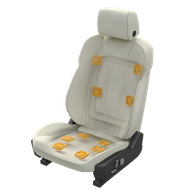 There is an increasing demand for seat fans to keep occupants cool. The HVAC system needs fans to support air purifier systems.
There is an increasing demand for seat fans to keep occupants cool. The HVAC system needs fans to support air purifier systems.
Melexis offers solutions in these areas too, especially with its state-of-the-art all-in-one single-coil fan and pump driver ICs. All these solutions add considerably to the comfort of the passengers.
Driving control & commands (HMI)
Gesture control
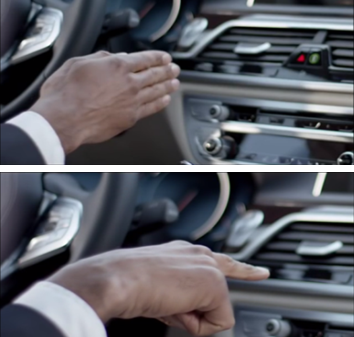 Gesture control can play a significant role in reducing the probability of causing a distraction-related accident because it minimizes the need for a driver to take their eyes off the road.
Gesture control can play a significant role in reducing the probability of causing a distraction-related accident because it minimizes the need for a driver to take their eyes off the road.
Applications currently using simple hand gestures in high-end cars include answering a phone call, changing the radio channel or volume, scrolling through the menu, zooming the navigation screen, playing the next song, opening or closing the sunroof, or operating interior lighting.
A 3D ToF camera is essential to facilitate gesture control. In 2019 and 2020 Melexis launched its third generation automotive qualified 3D ToF sensor ICs which has since then been adopted by premium OEMs.
Control knob
 Gesture control does not necessarily mean the demise of the humble control knob. Re-invented and re-named as a “multifunction controller”, the latest control knobs work in parallel with touchscreen technology. They can be pressed, twisted and nudged to control the climate system, audio settings, volume and a host of other uses. The same technology can be used to also control joystick type of motion such as the Melexis multi-function stalk indicators. Melexis Triaxis® automotive 3D magnetometer (magnetic field sensor) further supports cockpit HMI applications such as stalk indicators or e-knob control.
Gesture control does not necessarily mean the demise of the humble control knob. Re-invented and re-named as a “multifunction controller”, the latest control knobs work in parallel with touchscreen technology. They can be pressed, twisted and nudged to control the climate system, audio settings, volume and a host of other uses. The same technology can be used to also control joystick type of motion such as the Melexis multi-function stalk indicators. Melexis Triaxis® automotive 3D magnetometer (magnetic field sensor) further supports cockpit HMI applications such as stalk indicators or e-knob control.
Button control
With a complete portfolio of cockpit latches & switches including Triaxis® lateral sensing solutions, Melexis supports all the buttons surrounding a driver, including safety critical ones such as:
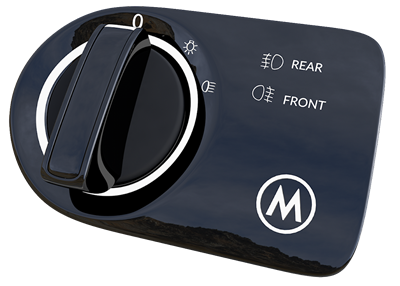
-
Headlamp switch
-
Driver’s hand adjustment
-
Interface button on the wheel (thumb-wheel button)
-
Sun visor position detection
-
Stalk-end position direction
-
Airbag deactivation switch
-
Park Lock Switch
-
...
Touch screen
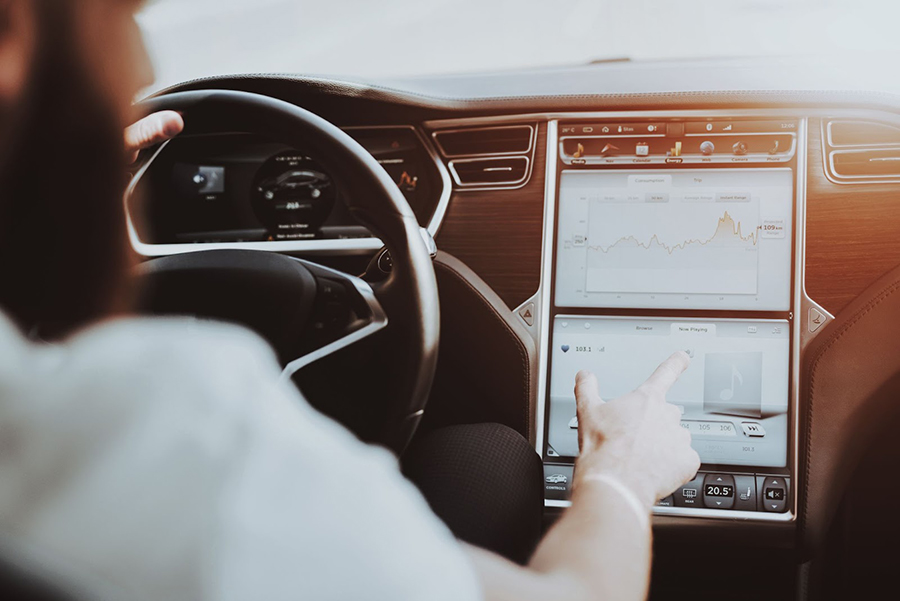 Touch screens, Audio Video Navigation (AVN),Single Large Displays and HUD Displays are gaining momentum. They combine ergonomics with safety. Drivers and their passengers get easy access to control functions while minimizing the risk of distraction for the driver.
Touch screens, Audio Video Navigation (AVN),Single Large Displays and HUD Displays are gaining momentum. They combine ergonomics with safety. Drivers and their passengers get easy access to control functions while minimizing the risk of distraction for the driver.
Trends indicate that the size of these displays will only increase. They will probably stretch all over the dashboard to the passenger side and the console between the two front seats.
The required GPU power for these intelligent devices needs sufficient cooling. It is necessary to maintain an appropriate temperature for both the electronics and the surrounding environment (e.g. cabin). Consult Melexis Fan driver ICs for an adapted cooling solution.
Steering wheel
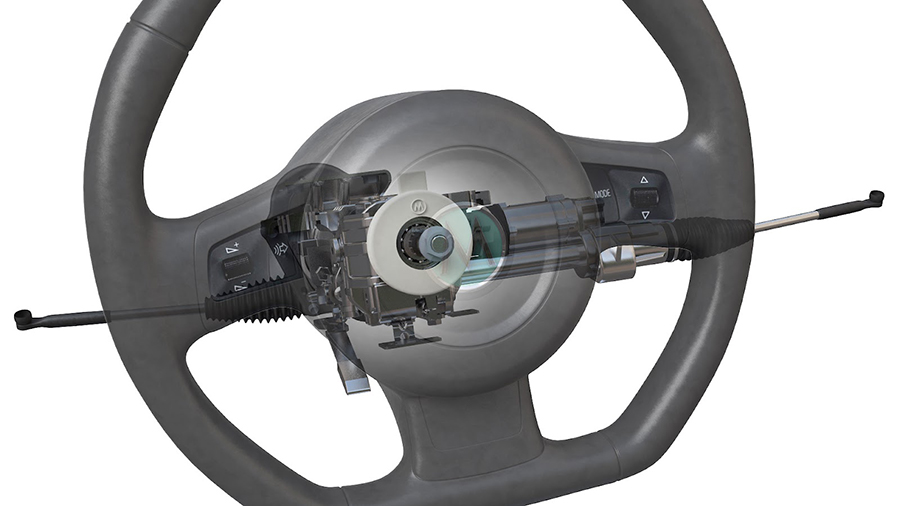 In the immediate future, even fully autonomous vehicles will still be equipped with a steering column and steering wheel.
In the immediate future, even fully autonomous vehicles will still be equipped with a steering column and steering wheel.
In this area, Triaxis® magnetic position sensor ICs are suitable for a range of applications. These include position sensing for brake or accelerator pedals, and E-steering which also requires torque sensing with magnetic linear Hall sensors.
Shifter
A recent innovation is a rotary controller that replaces the shift lever, the traditional control wheel, and a bank of buttons. Such an automatic transmission shifter solution (lever, knob and stub type) is possible with Triaxis® magnetic position sensors. These all reduce the integration efforts and enable a smaller size solution by removing the need for a big lever if desired.
Doors & windows
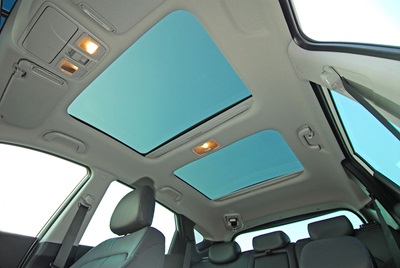 In the near future, all car doors are likely to open automatically as the driver approaches, or will be opened by gesture control. The technology could help disabled people, or offer benefits for those carrying child seats or large items, as the driver no longer has to struggle to free a hand to open the door. There should be no worries about the door automatically swinging open and bumping into a lamp post or nearby parked car as ultrasound or radar sensors will detect any obstacle.
In the near future, all car doors are likely to open automatically as the driver approaches, or will be opened by gesture control. The technology could help disabled people, or offer benefits for those carrying child seats or large items, as the driver no longer has to struggle to free a hand to open the door. There should be no worries about the door automatically swinging open and bumping into a lamp post or nearby parked car as ultrasound or radar sensors will detect any obstacle.
Once on board, the occupant could then close the door with a button, without having to reach out and pull the door shut. In regard to windows, one manufacturer is developing an automatic window opening system to prevent occupants drowning in vehicles sinking in water.
These are certainly future application areas for Melexis. In the meantime, Melexis offers complete sensor solutions for DC and BLDC motors that are used in various applications such as window lifter and sunroof motors: LIN embedded motor driver ICs and either latches & switches or magnetic position sensor ICs to complete the system.
Conclusion
Autonomous driving is already significantly changing a vehicle’s cockpit – and will definitely bring about more changes. Conventional display and operating systems will be insufficient or unnecessary. New, in-cabin sensors, apps and HMIs will support the car as an intelligent office, living room or bedroom on wheels – or even all three. In other words, the Cockpit of the Future is very much here today already, and is evolving rapidly.
Melexis is ready and able to fully support these developments. With a constant roadmap for innovation, the company has already expanded its range to encompass a variety of applications in the cockpit. It is committed to continue development to meet the requirements of the latest cockpit applications. Moreover, Melexis goes beyond the IC to offer a completely scalable and flexible architecture to facilitate the car manufacturer's evolution toward the newest trends while not having to rethink the complete body control unit system.
